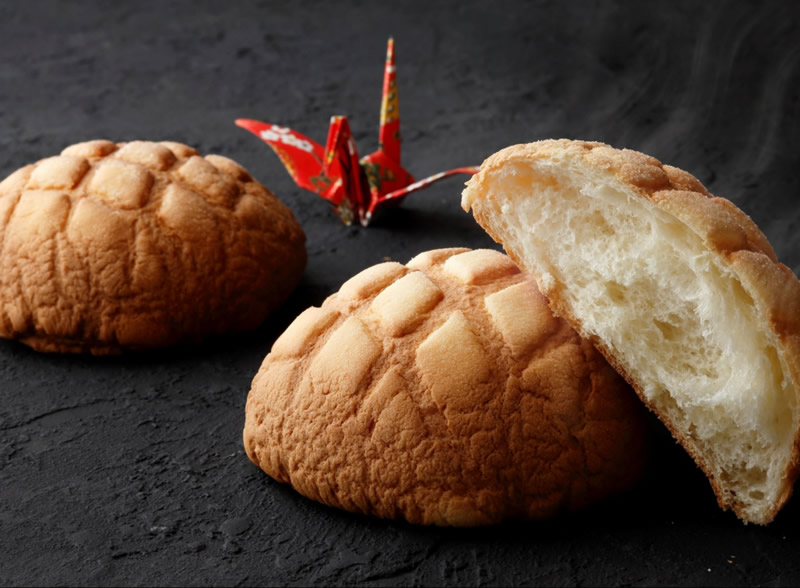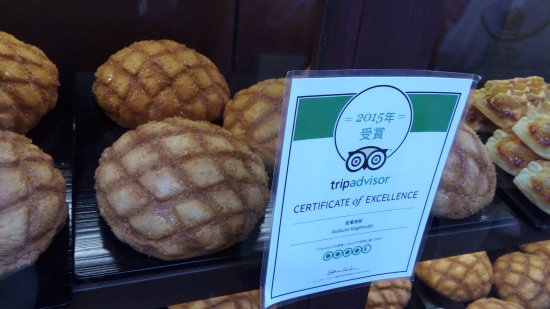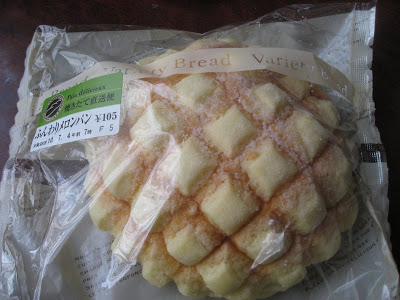Tools Used:
- Dinner rolls
- Pre-made Cookie dough
- Sugar
What is Melon Pan?
Melon pan or melon bread is a unique sweet bun from Japan. After trying it while visiting Japan I sought to find an easy way to make it back at home. Melon pan is essentially sweetened dough covered in a thin crisp cookie layer. Although they have melon in the name there is traditionally no melon flavor. The name comes from the appearance of the cross-hatching on the bun which looks similar to a cantaloupe melon.

If you are ever in Tokyo one of the best melon pans can be found at Asakusa Kagetsudo Honten bakery. Asakusa Kagetsudo Honten is tucked away at the entrance of a small shopping mall behind Senso-ji Temple in Asakusa (on the western side of the Sumida River to the west of Tokyo Skytree Tower). While their melon pan are huge at 6-7 inches in diameter and appear intimidating, they are very light and airy and compress very quickly when you bite into it. They are at their best if you can get them fresh out of the oven and still warm. Try one with ice cream inside if you can.

If you are looking to bring some back home for friends and family to try you don’t want to bring them one from Asakusa Kagetsudo Honten as after a day or so they won’t taste their best. Instead you are better off picking up a well-preserved melon pan from a convenience store such as 7-11 or Lawson. Although they won’t taste as good as a freshly baked melon pan, they will taste much better even after a week.

Shortcuts
After returning from my last trip to Japan I saw what made up melon pan and being too lazy to make rolls and cookie dough from scratch, figured there must be a easy shortcut to making melon pan. I came upon the following video on YouTube that gave me some direction on what to do (Note: these guys actually add melon flavoring to the cookie dough).
I went to the grocery store and picked up some Cake Shop dinner rolls. I chose Cake Shop rolls since they tend to add a bit more sugar in their bread. Nestle Toll House sell pre-made sugar cookie dough so I chose that for my cookie dough.

You will also need a bowl of sugar, a rolling pin, a knife and some flour. The Nestle sugar cookie dough comes pre-cut into 24 squares. Use four squares in order to cover the entire dinner roll. Roll the four squares into a ball. Spread some flour down on a cutting board to prevent the dough from sticking and use the rolling pin to flatten the ball into a flat circle.

Take the cookie dough and cover the top of a dinner roll. Next dip the top of the bun in the bowl of sugar.

Use a knife to lightly cut the cross-hatching on the top of the bun. You should be able to make 6 melon pan with the cookie dough. Bake in the oven for 15 minutes at 325F or until the tops just begin to brown.

From the photo below you can see that the cookie dough spreads out quite a bit after baking. Using the knife you can cut away this excess from the bottom of the bun (and eat these cookie pieces later as a nice snack).

Here is the final product shown below. Not quite like the ones in Japan but close enough.


Verdict
These quick and easy melon pan taste somewhat close to the ones I had in Japan. The dinner rolls tend to be a little denser than the bread dough typically used in melon pan so there is the difference when biting into one. Like the fresh melon pan these ones don’t last more than 3 days. After 3 days the cookie dough becomes soft and soggy while the roll becomes hard (the complete opposite of what makes a melon pan tasty).
Update: Second Attempt
On my second attempt I chose Crow Lane Bakery egg bread dinner rolls (like Portuguese sweet bread or Hawaiian bread). Knowing the cookie dough spreads out quite a bit, I made the cross-hatching smaller.

The results were similar to my first attempt. After 3 days I found that you can restore the crispiness of the cookie crust by placing the melon pan in a toaster oven for a few minutes.





